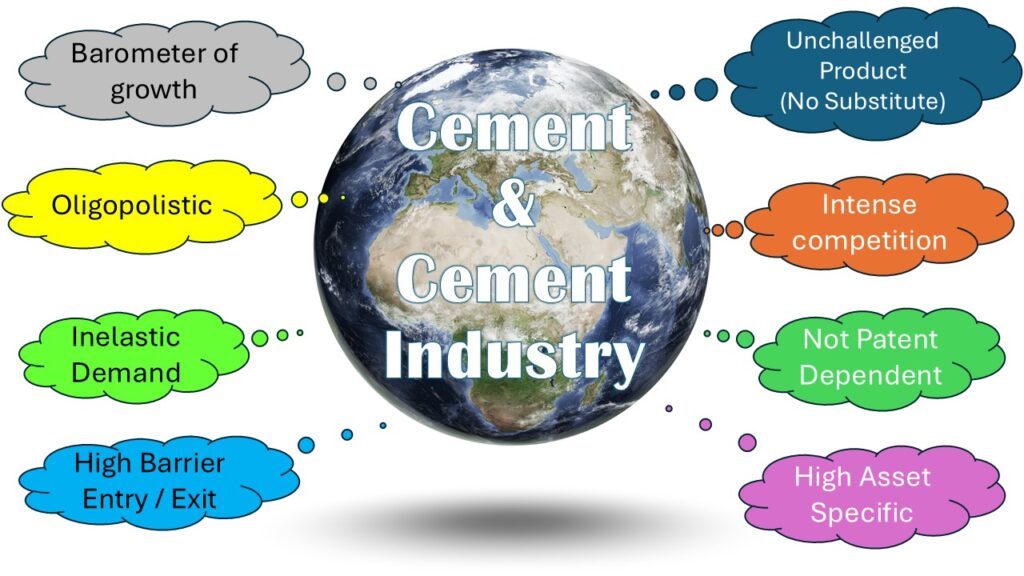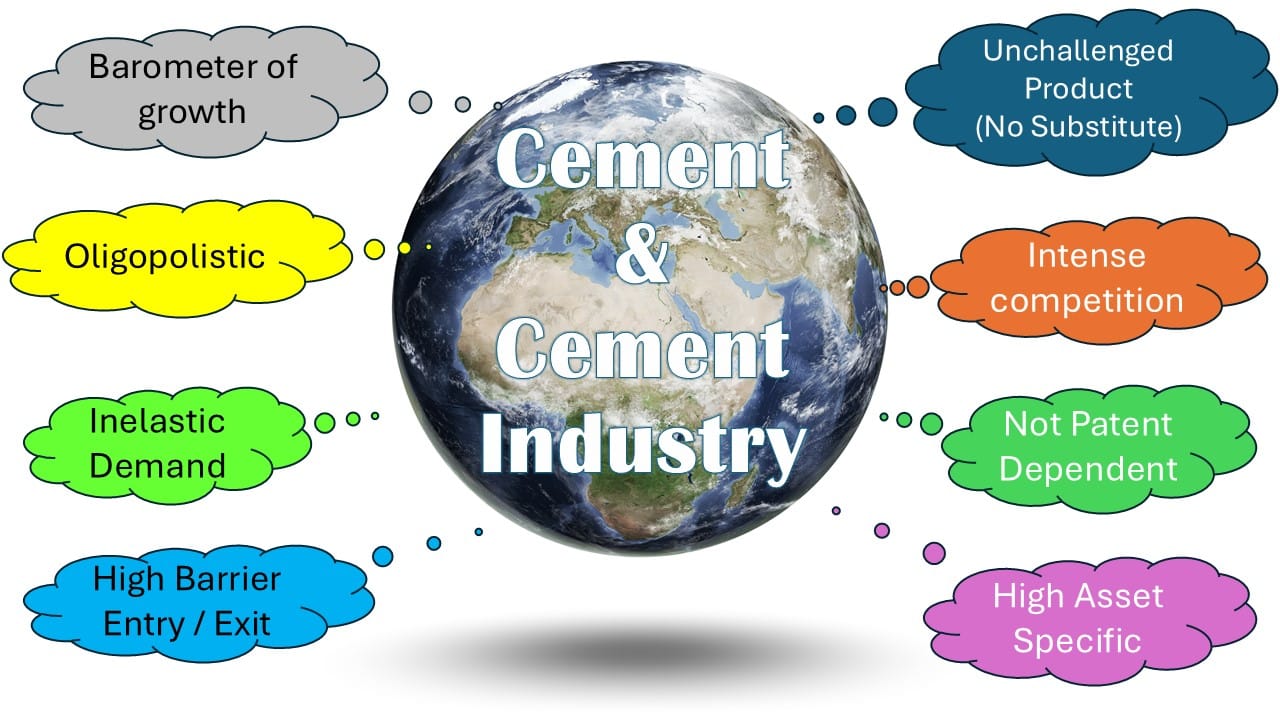Eight Characteristics of Cement Industry

Characteristics of the Cement Industry
The cement industry is expanding. With cement production reported in 173 of the world’s 193 countries, the industry plays an essential role in global economic growth and urbanization. The industry has distinctive characteristics of its own. These characteristics should be understood well before venturing into this industry. Let us explore these 8 characteristics.
1. Barometer of Economic Growth
Cement consumption reflects economic trends, making it a reliable indicator of growth. An increase in demand signals infrastructure development and housing growth, key markers of a thriving economy. Cement production often rises as governments invest in infrastructure, construction booms, and urbanization accelerates.
2. Oligopolistic Market Structure
A limited number of large players dominate the market, establishing an oligopoly. This structure contributes to pricing stability yet intensifies competition among major firms. Companies vie for dominance through efficient production, innovations, and scale, making the landscape both stable and competitive.
3. Inelastic Demand
Cement demand remains steady regardless of price fluctuations, as it’s an essential material with no viable substitute. Construction projects, both public and private, must use cement, making it a non-negotiable part of the building process. This price inelasticity stabilizes the industry but places pressure on producers to manage costs effectively.
4. High Barriers to Entry and Exit
Setting up a cement plant requires substantial capital investment, making entry into the market challenging for newcomers. The industry’s regulatory requirements, high fixed costs, and long payback periods create significant entry and exit barriers. Existing players benefit from this structure but also face high stakes in maintaining operational efficiency.
5. High Asset Specificity
Setting up a cement plant requires substantial capital investment, making entry into the market challenging for newcomers. The industry’s regulatory requirements, high fixed costs, and long payback periods create significant entry and exit barriers. Existing players benefit from this structure but also face high stakes in maintaining operational efficiency.
6. No Patent Dependency
The production processes in the cement industry are largely standardized, requiring little reliance on patents. Instead, competitive advantage comes from process optimization, efficiency, and minimizing production costs. Innovations in this sector are focused on sustainability and environmental compliance rather than exclusive technology.
7. Intense Competition
Despite its oligopolistic nature, the cement industry faces fierce competition at both local and international levels. Companies compete on factors such as quality, cost efficiency, sustainability practices, and market reach. Environmental performance has become a differentiating factor as the industry faces pressures to reduce carbon emissions.
8. Unchallenged Product with No Substitute
Cement remains the fundamental building material for most infrastructure projects, with no substitute that meets the same cost and durability requirements. This uniqueness secures the industry’s position in the market, regardless of economic cycles. Research continues into alternative building materials, yet cement’s affordability and reliability make it the undisputed choice.
These features make it a vital yet challenging sector, requiring strategic insight and efficient operations to succeed. Despite environmental pressures driving innovation, cement remains irreplaceable due to its cost, durability, and versatility in construction.





